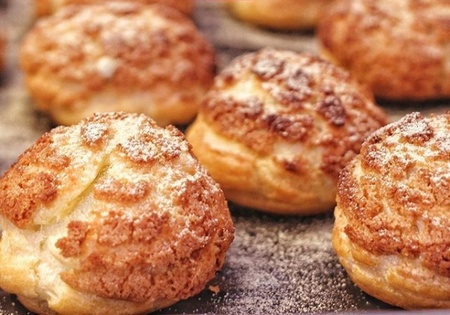
Sweet facade, geek decor. Through the door, the person who was being waited for passes. At first glance, the serious expression does justice to the responsibilities of a micro-entrepreneur. However, in a more informal conversation, another side is discovered: the joy of a girl who loves what she does. The youngest of three brothers, Melissa Takami, aged 34, is the founder and administrator of Moti Confeitaria.
The anime -themed t-shirt indicates his interest in Japanese culture – which comes mainly from his friendships. “I've always hung out more with Orientals, not just Japanese, but Chinese and Korean as well. So I always liked the culture.” He attended a technical school in the Ipiranga neighborhood, where there is a concentration of Asians. There, Melissa was part of the “clique” that danced street dance , a set of styles now renamed K-pop . Outside of school, he met people at clubs and became friends with friends when they met in shopping malls . “I still have a lot of friends from that time today,” he says.
New airs and flavors in Japan
The idea of going to Japan became a reality in 2006, after taking the entrance exam and failing to pass at a public college. In his family's country of origin, he worked in factories, including producing obentô and sweets (in the packaging section).
He lived in several provinces – such as Aichi, Mie and Nagano – more in the interior region, where he had the experience of living in a house surrounded by rice fields. At first, Melissa says she worked the same job for more or less six months until she finished paying for her plane ticket.
Afterwards, however, it no longer paid off financially, because I didn't have as much overtime, and decided to look for options in one of those job advertisement magazines. “As there is a lot of demand for factories there, it was easier to move.” This way, he had the chance to get to know different parts of the country. What helped was the fact that I didn’t have a lot of clothes or things to carry: “I only lived with the basics, right?”
However, I needed to resist the temptation to spend on shopping. “I went straight to Tokyo and Nagoya. I was very young, so saving money was good, nothing! [laughs] You see a lot of cute things, it makes you want to buy everything”, he confesses.
“One of the things I didn't regulate was food, I wanted to visit a lot of restaurants. And the more I knew, the more I wanted to try it.” Even exotic dishes, to make the most of your trip. Japanese desserts are “ideal” for your taste buds. “I started to like the sweets there, because I don't like anything too sweet or too salty”, explains the young woman, curious about Japanese confectionery combinations. The traditional choux cream Melissa reveals that she ate it almost every day. Another point in favor is that in relation to the most common sweets “there is no comparison”, they are “much lighter”. “So much so that I came back about 10 kg heavier. The ingredients there are better, like the flour: it’s much finer and the cake is fluffier.”

Sweet destiny
After three years in Japan, Mel – so called by those closest to her – returned to Brazil and started business school. She did an internship at some companies and, in 2010, joined the Bank of Tokyo, where she was hired after completing her studies. He even completed a postgraduate degree in Financial Market for three months. “That wasn't what I wanted to do for the rest of my life. I just didn't have the courage to leave, afraid it wouldn't work out.”
He then decided to invest in what he always liked to do: cooking. He enrolled in cake confectionery courses and started selling sweets in 2015. “I started making honey bread, brigadeiro, very basic things.” I participated in events on the weekends and received orders from coworkers in the same area, as well as other people in the office who tasted and ended up placing orders as well. His sweets pleased so many people that he started offering them to his friends more often.
Until, one time, an order may have been the sign of a new cycle for Melissa, even without her realizing it. The typical dessert in question is ichigo daifuku , mochi stuffed with anko and strawberries. The first examples were not as uniform as desired, but – in compensation – the harmony of flavors won over the clientele.
It seems like destiny. The bank where she worked sent her away along with other employees in February 2017. Her mother was “desperate”, as she was worried about what her daughter would do with her life.
- I'm going to open a candy store!
- (disappointed face) My God, are you going to spend all your money?
- I go. [laughs]
“I took everything I received [from the termination of the employment contract] and invested it in the store. I already had a menu in mind, it was everything I liked and I made it more or less”, he says. At this point, the skills related to preparing ichigo daifuku were improved, the result of constant practice. And he remembers that the idea was to find a small place, “to start with”. It took four months of searching for properties until the opening of Moti Confeitaria in Vila Clementino, south of São Paulo.

The candy store was so successful that at the end of 2019 it moved to the Cursino neighborhood. The total area of the previous corner was equivalent to that of the current hall. In the kitchen, “they were bumping into each other, very tightly”, emphasizes Mel.
Although he had knowledge in administration and determination to transform what was just a hobby into a profession, physical establishment was uncertain. “If you are going to lose, of the losses, the smallest. ” Another question was the type of food that would be offered. “Before, I thought about making a savory dish, like shogayaki , karê ,” he says. However, he soon realized that just imagining having to cook in large quantities was “disheartening”. For this reason, only prepare it to eat at home. Furthermore, the challenge was to discover something that was not so common. “Now there are a lot of options for Japanese sweets, but back then it was a little more difficult”, he compares.
Dedication in everyday life
As a small business owner, your routine requires more than being part of production and supervising the team. Melissa is also in charge of the administrative side, including purchases (some even on days off), accounts and paperwork. Therefore, he arrives early – generally around 6 am – and works 12-hour days. “That’s why, when an opportunity arises, I prefer to close it. It’s a day or a few days when we can rest, right?”, he explains. In his free time, he takes the opportunity to stay at home and, of course, to sleep and replenish his energy.
Not only between moments of rest but also during traffic, the busy micro-entrepreneur reads books on cooking theory and watches videos on YouTube in search of tips. “I take one thing from a book, mix it with another and then I make something of my own. I really like inventing, breaking my head”, he says. To do this, it tests changes from the original recipe with the aim of improving the result. “Cooking means knowing what each thing is for, whether it will be good or not. A lot of things go wrong, we either eat them or throw them away, because we can't sell them. It’s really an experiment.”
Conquer, improve and go beyond
Without a doubt, a new and important step was taken with the inauguration of the new house in November 2019. Now, after the adaptation phase to the larger space, the time is to think about what can be improved. Currently, sweets dominate the menu, while potato bread is the only savory option. Mel highlights, among the filling variations, the karê filling ( kare raisu or curry rice ) – a Brazilian version of karepan . “Everything we do comes out, because people really like it,” he says. And he adds that one of the plans is to include other savory snacks inspired by Japanese cuisine.
One of the sacrifices, on the other hand, is having almost no social life. However, that's not what worries his friends, it's the fact that he works so hard. “It’s a phase,” says Melissa, explaining that she must make an effort to pay for the renovation. The dream may not seem so beautiful in harsh reality. However, keeping it alive is what motivates us to achieve it.
Perhaps for this reason, continuing to operate amid the pandemic caused by the coronavirus and its rapid spread in the city was a reasonably easy challenge to face. The biggest difficulty encountered was thinking about how to offer the delivery service after the decision to close the salon to the public – taken before the official quarantine decree. “As a COVID-19 prevention measure, we have closed the area where customers consume sweets to avoid crowding and the spread of the virus”, states one of the statements published on the confectionery's Instagram profile. “ Delivery is a new experience for us”, adds another.
What was noted was a series of successful weeks, unlike many local businesses that have not yet managed to adapt to the situation so well. At first, the delivery system was in operation with the distance and rates adjusted. The following week, five more items were added to the delivery menu. For Easter, the reduced team worked until the production limit. But such demand was not expected. “For this reason, each order filled our hearts with hope”, reveals the thank you post .
© 2020 Tatiana Maebuchi





